![ArtsNow Learning: Self-Portrait Collage [PDF]](https://openspace.infohio.org/static/newdesign/images/materials/default-thumbnail-index.png)
In this lesson, students look at how non-human images can be used in a self-portrait to portray aspects of a personality.
- Subject:
- 21st Century Skills
- Computer Science
- Technology
- Material Type:
- Lesson Plan
- Provider:
- ArtsNow
- Date Added:
- 10/01/2022
![ArtsNow Learning: Self-Portrait Collage [PDF]](https://openspace.infohio.org/static/newdesign/images/materials/default-thumbnail-index.png)
In this lesson, students look at how non-human images can be used in a self-portrait to portray aspects of a personality.

Brief biographical history with links to images of his works including "The Four Holy Men." Also contains information on his high regard in Germany as an artist and offers interpretation of several of his paintings and his style.
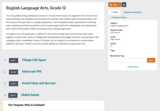
The 12th grade learning experience consists of 7 mostly month-long units aligned to the Common Core State Standards, with available course material for teachers and students easily accessible online. Over the course of the year there is a steady progression in text complexity levels, sophistication of writing tasks, speaking and listening activities, and increased opportunities for independent and collaborative work. Rubrics and student models accompany many writing assignments.Throughout the 12th grade year, in addition to the Common Read texts that the whole class reads together, students each select an Independent Reading book and engage with peers in group Book Talks. Language study is embedded in every 12th grade unit as students use annotation to closely review aspects of each text. Teacher resources provide additional materials to support each unit.

This project unit—a multimedia self-portrait published in digital form—is the capstone of your students' high school careers. It is a chance for them to pause and reflect on where they've been, where they're going, and who they are as a person. Students will reflect on what they want others to know about them: what they want their message to be and what types of media they might use to convey that message. Students will have the opportunity to express themselves in many different formats—through writing, of course, but also through other media of their choosing. Students will be able to convey your message through visual art, photography, a graphic novel, audio, poetry, or video—practically any type of media they want!
ACCOMPLISHMENTS
Students will complete a multimedia self-portrait, capturing important aspects of the essence of themselves.
Students will contribute one chapter from their multimedia self-portrait to a class anthology.
Students will present one chapter from their multimedia self-portrait to the class.
GUIDING QUESTIONS
These questions are a guide to stimulate thinking, discussion, and writing on the themes and ideas in the unit. For complete and thoughtful answers and for meaningful discussions, students must use evidence based on careful reading of the texts.
How is late adolescence a moment of internal and external change?
What are the most important qualities of your character—past, present, and future?
How can you portray these key aspects of yourself using multimedia?
BENCHMARK ASSESSMENT: Cold Read
During this unit, on a day of your choosing, we recommend you administer a Cold Read to assess students’ reading comprehension. For this assessment, students read a text they have never seen before and then respond to multiple-choice and constructed-response questions. The assessment is not included in this course materials.

How can students enhance the written chapter of their self-portrait? They’ll review different types of artifacts that they can add to their written chapter, such as images, video, and audio. They’ll decide which artifacts they want to include and make plans to create them.
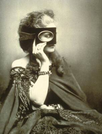
Today, you will demonstrate how much you know about writing an effective argument.In this lesson, you will administer a Benchmark Assessment (Cold Write) to determine what students have learned about argument writing. Students will respond to a prompt, and then you will assess each student’s argument using the scoring guide. Students have had the opportunity to write an argument earlier in the year; this final assessment will show their growth as writers and their mastery of the genre. To see individual students’ progress in argument writing, compare the scoring guides from previous Cold Writes.
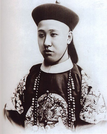
What questions and concerns do students have with the first draft of their written chapter? They’ll spend time working with a partner to peer edit their draft and get feedback on their writing. They’ll then start planning the revisions they’ll make to their written chapter.

Students will review their work, noting any changes that they still need to make. They’ll decide which chapter to include in the class anthology and share it with a peer, getting feedback and suggestions. Then they’ll continue to review and finalize their work.

It’s time to start pulling it all together! Students will work on creating, editing, and compiling the various chapters of their self-portrait.

In this lesson, students will continue to create, edit, and compile the various chapters of their self-portrait. They’ll also continue to update their planning documents and keep track of the progress they’re making with their project work.

In this lesson, students will continue to upload their chapters and artifacts, reviewing and editing their work and troubleshooting any problems that arise.
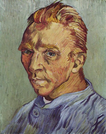
What kinds of changes—internal and external—are in literary self-portraits? Students will explore the types of changes portrayed in fiction. They’ll examine literary techniques writers use to portray self-portraits and change, and consider which techniques they find most useful.

What are your students’ strongest personal character strengths at this point in their lives? As students mine the interviews they conducted, they’ll look for character strengths others see in them. Do they see these strengths in themselves? Are they qualities that your students want to portray in their self-portrait?
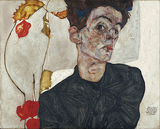
How is this time in your students’ lives a moment of change? Students will work with a partner to reflect on changes they’ve experienced, people and places that are important to them, and key decisions that they’ve made. They’ll then write a summary of what they learned about their partner.

This website contains a lesson plan in which students attempt to analyze different types of portraits for better understanding. It contains 6 different lessons in which students look at examples of portraits of children, important American figures, people at work, and self-portraits.

This site is an introduction plus a series of three lesson plans that explore Franklin's portraits plus aspects of his work in science and writing.